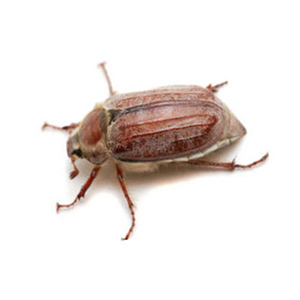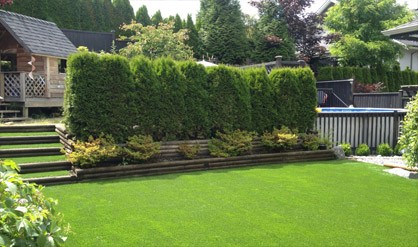Vancouver’s European Chafer Beetle Epidemic

Don’t let the Chafer Beetle wreck your lawn..
Precision Greens’ artificial grass defends your lawn against the destructive Chafer Beetle.
What’s the greatest benefit of artificial grass? The animals aren’t tearing it up making a mess!
Did you know that right now there are millions of European Chafer larvae waiting patiently, just underneath your lawn, preparing to emerge as grub in July? Luckily, we have crows, racoons and other animals eating them before they are able to mature into reproducing beetles. Unfortunately this is creating an epidemic for thousands of lawns across the Greater Vancouver area, causing them to be torn up and destroyed right from the roots.
Although you may see the animals that are destroying your lawn as the greatest offender in this epidemic, they are actually helping slow down and prevent the Chafer beetle infestation. Once fully matured, a female European Chafer beetle can lay anywhere from 20 – 60 eggs. This is why the Chafer beetle infestation has quickly become an invasive species creating substantial damage to local properties.
European Chafer Beetle
How it all started the European Chafer Beetle
Why the Chafer Beetle is becoming an epidemic
The North American infestation occurred in the early 1940’s when it was brought in from Europe. This infestation didn’t effect the Vancouver area until much later in 2001, when it was shipped from the East in gardening supplies that had eggs unknowingly embedded within it. These eggs were able to bypass inspection due to the size of the eggs and the difficulty in spotting them in comparison to larvae that has further developed.
Once these eggs had successfully infiltrated the soil, they began to spread throughout New Westminster, beginning the infestation. This invasive species has grown exponentially each year causing damages due to a variety of reasons including the aforementioned 20 – 60 eggs mature beetles lay yearly.
With only a 1-year life cycle, the European Chafer Beetle eggs are laid a few inches below the grass following the mating period in June and July. These eggs take only 2 weeks to hatch, in which time they start feeding, causing the grass to turn yellow3.
The newly born Chafer grubs feed until around November, after which they move deeper into the ground, rising again in March and May for feeding. In early June the grubs migrate deeper into the ground to pupate and by late June, the beetles rise to the surface to begin their mating process.
Guaranteeing a Chafer Free Lawn

Don’t let your lawn fall victim to the onslaught of the European Chafer Beetles
8 Year Warranty Vancouver Chafer Beetle
If your lawn is struggling to survive the chafer beetle season, it might be time to consider some ways of eliminating this issue once and for all. Although there are many bandaids on the market to reduce the European Chafer Beetle’s population, there is only one method with a proven 100% success rate that will guarantee your lawn survives the season.
All of Precision Green’s artificial grasses come with a European Chafer Beetle Free Guarantee. They require no chemicals or seasonal planning to prevent a Chafer beetle infestation, in-fact, they require practically no maintenance at all!
If your lawn has been damaged due to the chafer beetle, don’t take the same risk again next year – contact Precision Greens for a FREE estimate today.
